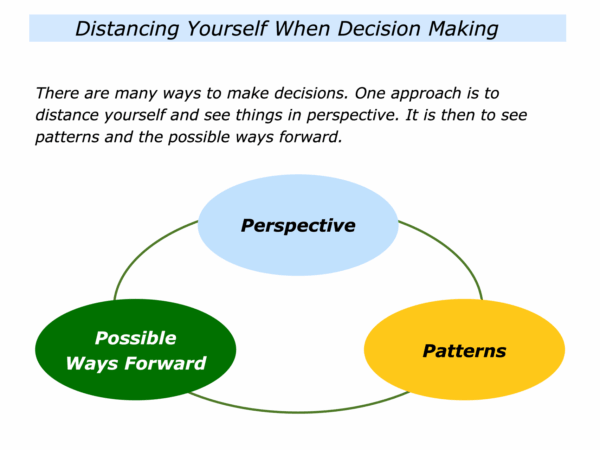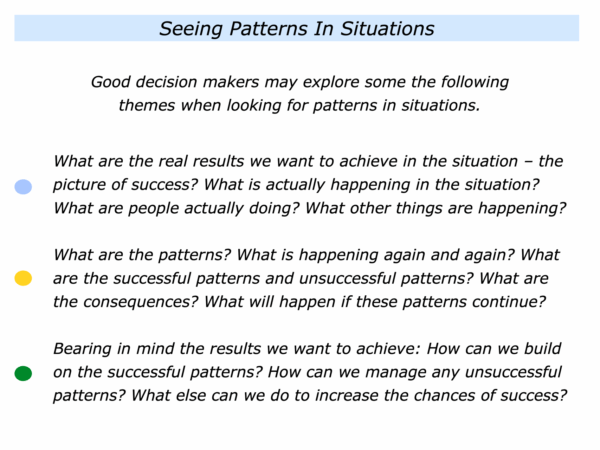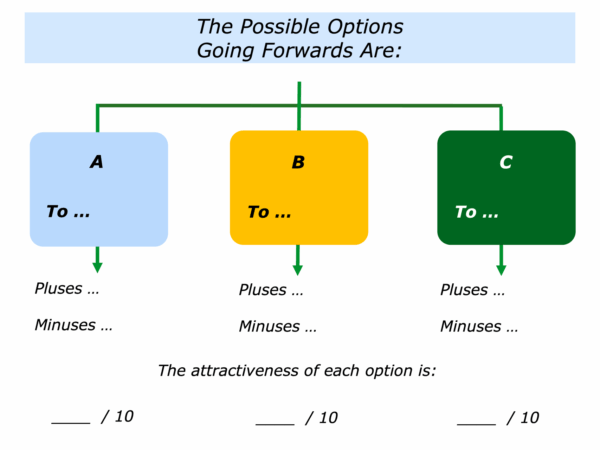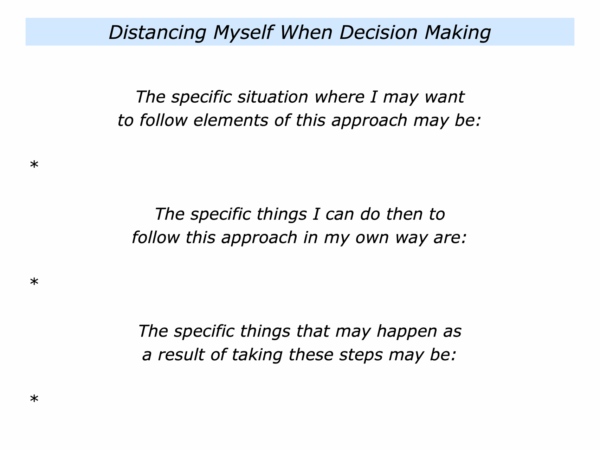
There are many ways to make decisions. One approach is to distance yourself. This can help you to see things in perspective, see patterns and see the possible ways forward.
Imagine that you want to follow elements of the distancing approach when making certain decisions. This can involve focusing on the following themes.
Perspective
Good decision makers often aim to distance themselves and see things in perspective when making a decision. Different people do this in different ways in certain situations.
Some people helicopter above the situation to get the big picture. They aim to gather information, get an overview of what is actually happening and explore the possible ways forwards.
Some people have a wider perspective. Every decision has consequences, but some decisions have greater consequences than others. They ask themselves:
How important is the decision in the great scheme of life? Will the decision still be important in one year, ten years or a longer period of time?
Some people drain themselves of emotion. They become calm, clear and consider their options. They may then demonstrate what is called cold courage when moving into action.
Different people look for different things when seeing events in perspective. One approach is to focus on the following theme.
Patterns
Pattern recognition is one of the keys to peak performance. Good decision makers are often good at seeing patterns in their area of expertise. Such people often take the following steps when going into a situation.
They clarify the real results to achieve in the situation – the picture of success;
They clarify what is actually happening and recognise both the successful and unsuccessful patterns – plus the consequences of these patterns;
They clarify how to build on the successful patterns – plus manage any unsuccessful ones – and do their best to achieve the picture of success.
Different people focus on different things when aiming to see patterns in a situation. Some people explore the following themes.

Possible Ways Forward
Good decision makers often maintain perspective and also look for patterns in situations. Whatever their approach, however, they will then move on to considering the possible ways forward.
Some people make a map of the possible ways forward. They ask themselves the following questions.
What are the real results we want to achieve in the situation? What are the possible options going forwards? What are the pluses and minuses of each option? On a scale 0-10, what is the attractiveness of each option?

Good decision makers often outline the possible options and then take time to think. They like to reflect and let the ideas incubate. Some do this by exploring the following themes.
Are there any other potential options going forward? For example, is it possible to combine the best parts of each option? If so, what would this route look like?
Looking back, have I ever tackled a similar situation successfully? What did I do right then? What were the principles I followed? How did I translate these into action? What happened as a result?
Looking around, have any other people tackled a similar situation successfully? What were they principles they followed? How did they translate these into action? What happened as a result?
Let’s return to the real results we want to achieve. What are the key strategies we can follow to give ourselves the greatest chance of success? How can we translate these into action and deliver the goods?
There are many ways to make decisions. One approach is to distance yourself and see things in perspective. You can then do your best to achieve the picture of success.
Let’s return to your own life and work. Looking ahead, can you think of a situation where you may want to follow elements of this approach? How can you do this in your own way?
If you wish, try tackling the exercise on this theme. This invites you to complete the following sentences.



Leave a Reply